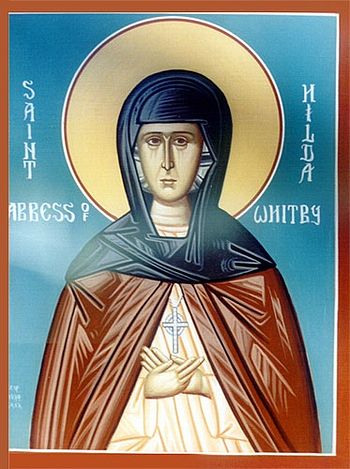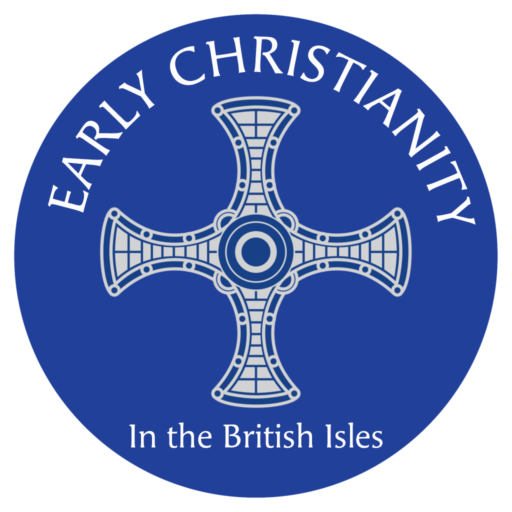St Hilda

Hilda was born into the royal household of the kingdom of Deira. She grew up in the court of King Edwin of Northumbria after he had united the kingdoms of Deira and Bernicia. When the Christian mission under St Augustine of Canterbury was invited to Northumbria on the marriage of the Christian daughter of King Aethelberht and Queen Bertha of Kent, King Edwin was converted and baptised together with Hilda, 13 years of age at the time, and other members of his court, in a wooden church erected for the sacrament on the site of what is now York Minster.
When Edwin was defeated and killed in battle, his Queen Aethelburh returned to Kent, and brought Hilda with her. Aethelburh founded a convent at Lyminge, and Hilda entered the convent with her. After many years she was invited to join her sister who had become a nun at Chelles Abbey in France, but Bishop Aidan of Lindisfarne called her to Northumbria and she returned there establishing a first convent on the banks of the River Wear.
She learned the practice of Ionan monasticism from Aidan who appointed her the second Abbess of Hartlepool Abbey, before she founded Whitby or Streoneshalh in 657 AD. It is said that the ideals of monasticism were all preserved there, with property held in common, peace and love between the brethren exhorted, and study of the Bible and service in good works promoted.
She is described as a woman with great energy, who was a skilled administrator and teacher. She was responsible for managing the estates of the monastery, and her reputation for wisdom brought kings and princes to ask her advice. Bede says of her…” All who knew her called her mother because of her outstanding devotion and grace.”
Her prestige is reflected in the location of the council of Whitby at her monastery. Church leaders from across the British Isles and as far away as Wessex attended. When the King determined to continue with the latest Roman calculation of Easter, she accepted it with most of the others present.
In the last years of her life she faced ill health but continued to work until the 17th November, 680 AD when she died at the age of 66. She had established another monastery at Hackness, 14 miles from Whitby, in the last year of her life, and it is said that when she died the bells at Hackness started to toll, and that a nun there, Bega, saw her soul being carried to heaven by angels.
